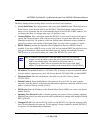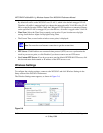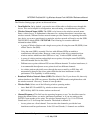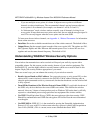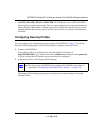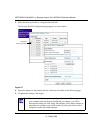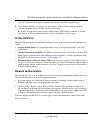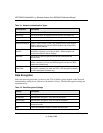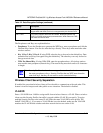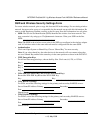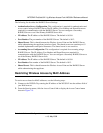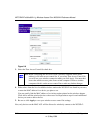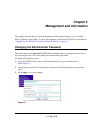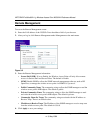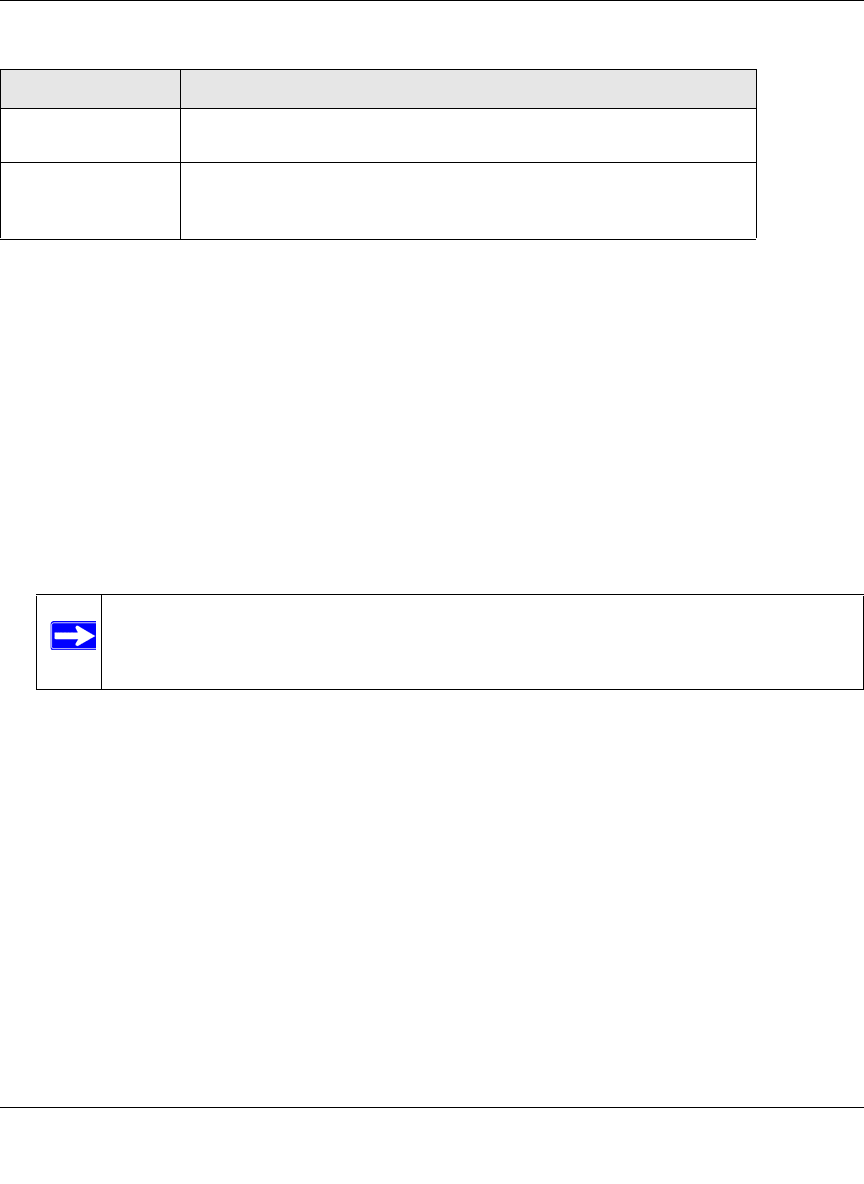
NETGEAR ProSafe 802.11g Wireless Access Point WG302v2 Reference Manual
Basic Installation and Configuration 2-17
v1.0, May 2006
The Passphrases and Keys are explained below:
• Passphrase. To use the Passphrase to generate the WEP keys, enter a passphrase and click the
Generate Keys button. You can also enter the keys directly. These keys must match the other
wireless stations.
• Key 1, Key 2, Key 3, Key 4. If using WEP, select the key to be used as the default key. Data
transmissions are always encrypted using the default key. The other keys can only be used to
decrypt received data.
• WPA Pre-Shared Key. If using WPA-PSK, enter the passphrase here. All wireless stations
must use the same passphrase (network key). The network key must be from 8 to 63 characters
in length.
Wireless Client Security Separation
If enabled, the associated wireless clients will not be able to communicate with each other. This
feature is used for hotspots and other public access situations. The default is disabled.
VLAN ID
Enter a VLAN ID from 1-4094 to assign traffic from wireless clients to a VLAN. When a wireless
client uses this Security Profile, the traffic is tagged with the VLAN ID you specify. To assign
multiple Security Profiles to the same VLAN, enter the same VLAN ID for each profile. The
default VLAN ID is 1. If you enter a VLAN ID that is not the default, make sure the VLAN ID
matches the VLAN ID that switches and other network devices use on the LAN.
AES This is the standard encryption method for WPA2. Some clients may
support AES with WPA, but this is not supported by this Access Point.
TKIP + AES This setting supports both WPA and WPA2. Broadcast packets use
TKIP. For unicast (point-to-point) transmissions, WPA clients use TKIP,
and WPA2 clients use AES.
Note: Security Profiles that share the same type of network authentication must share
the same passphrase or keys. Security Profiles that use WEP must share the
same four keys, but they do not need to use the same default key.
Table 2-2 Data Encryption Settings (continued)
Settings Description



